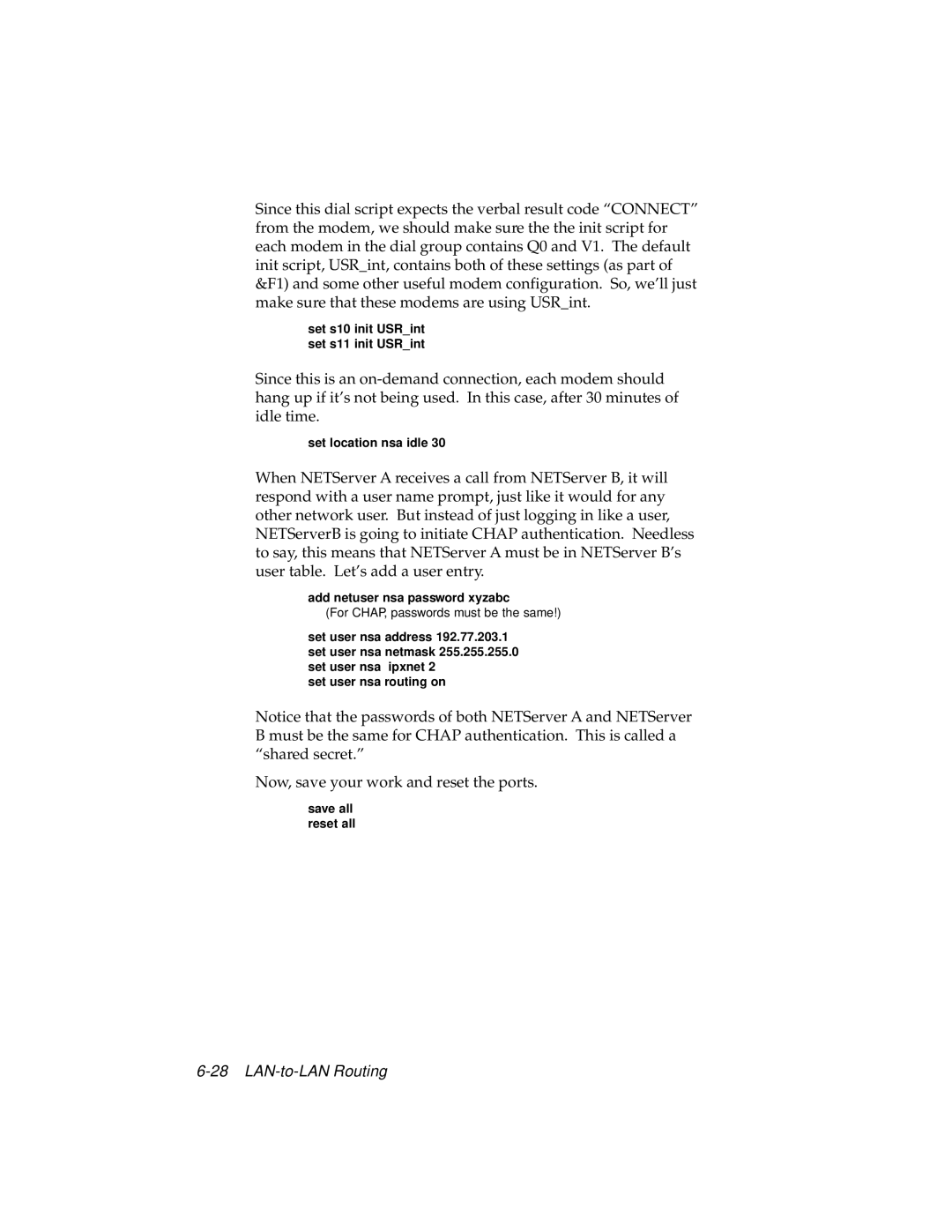Since this dial script expects the verbal result code “CONNECT” from the modem, we should make sure the the init script for each modem in the dial group contains Q0 and V1. The default init script, USR_int, contains both of these settings (as part of &F1) and some other useful modem configuration. So, we’ll just make sure that these modems are using USR_int.
set s10 init USR_int set s11 init USR_int
Since this is an
set location nsa idle 30
When NETServer A receives a call from NETServer B, it will respond with a user name prompt, just like it would for any other network user. But instead of just logging in like a user, NETServerB is going to initiate CHAP authentication. Needless to say, this means that NETServer A must be in NETServer B’s user table. Let’s add a user entry.
add netuser nsa password xyzabc
(For CHAP, passwords must be the same!)
set user nsa address 192.77.203.1 set user nsa netmask 255.255.255.0 set user nsa ipxnet 2
set user nsa routing on
Notice that the passwords of both NETServer A and NETServer B must be the same for CHAP authentication. This is called a “shared secret.”
Now, save your work and reset the ports.
save all reset all
